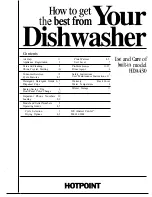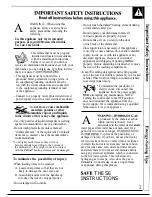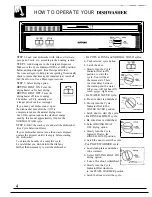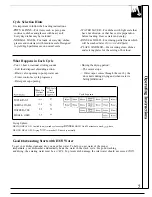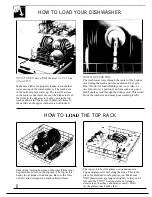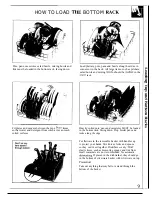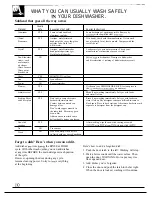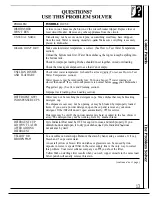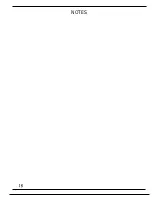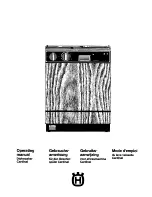
Cycle Selection Hints
It is important to follow the Loading instructions.
●
POTS & PANS—For
items such as pots, pans
●
WATER SAVER—For dishes with light soils that
cookware, dishes and glasses with heavy soil.
have not dried on, or that have extra preparation
Everyday dishes may be included.
before loading. It saves water and energy.
●
NORMAL WASH—For loads of everyday dishes,
●
RINSE & HOLD—For rinsing partial loads which
glasses and cookware with medium soils. Designed
will be washed later.
to yield high performance on normal soils.
●
PLATE WARMER—For warming clean dishes
and serving plates for the serving of hot food.
What Happens in Each Cycle
●
You 11 hear occasional clicking sounds:
●
During the drying period:
—Soft food disposer shredding action.
—The motor stops.
—Drain valve opening to pump water out.
— Water vapor comes through the vent by the
—Timer control as cycle progresses.
door
during drying and when water is
out.
—Detergent cup opening.
.
Cycle
Use
Time
Gallons
Minutes
Cycle Sequence
POTS & PANS
97
NORMAL WASH
11.4
WATER SAVER
8.2
72
RINSE & HOLD
Drying Options:
DRYING HEAT ON. Available on
wash cycles except
RINSE&
HOLD. Add 25 minutes to wash
time
DRYING HEAT OFF. Drying
is turned off. Dishes dry naturally.
Good
Starts with HOT Water
To get your dishes clean and dry, you need hot water. To help you get water of the proper
temperature, your dishwasher automatically heats the water in the wash cycle. For good washing
and drying, the entering water must be at
To prevent dish damage, the inlet water should not exceed

